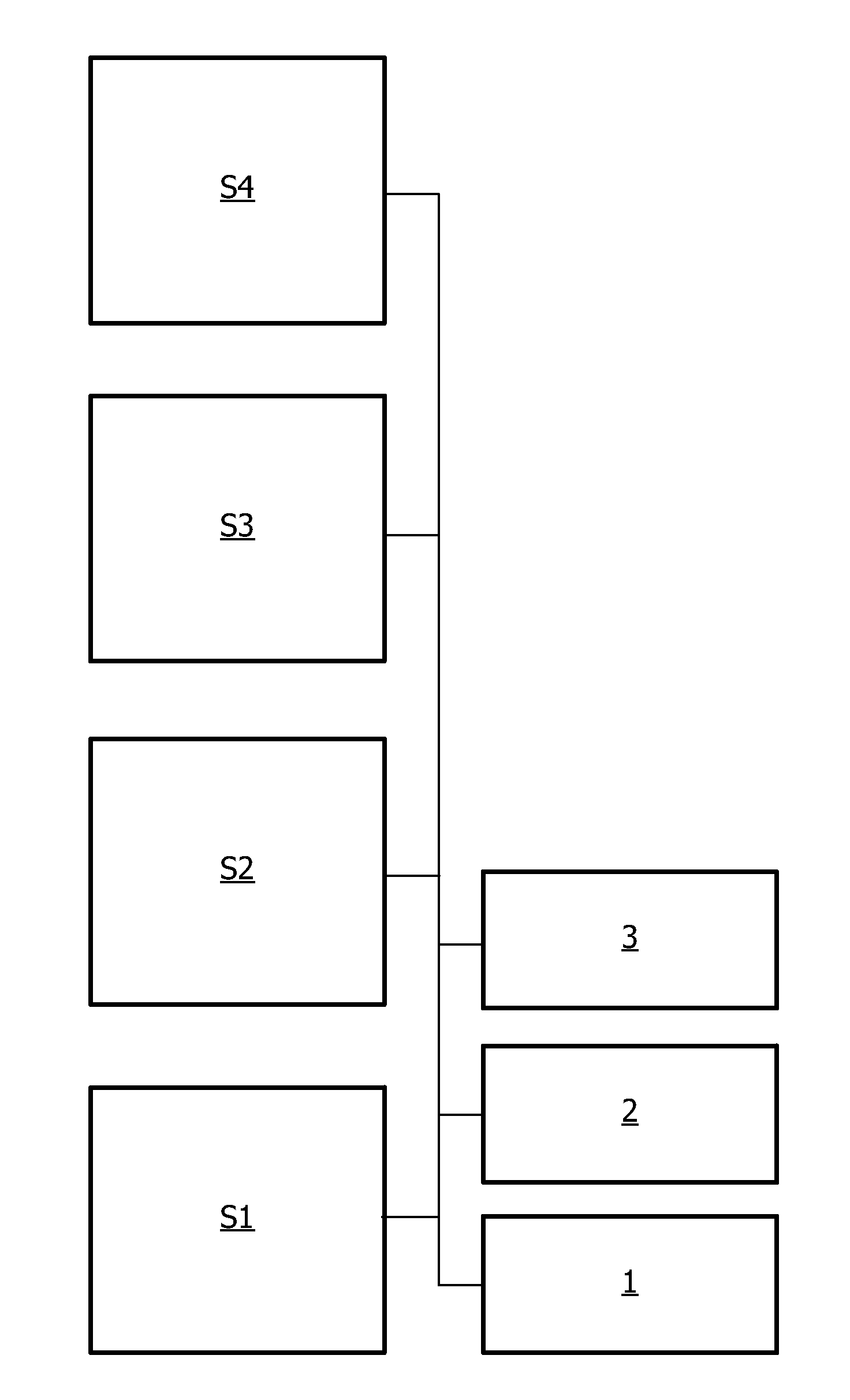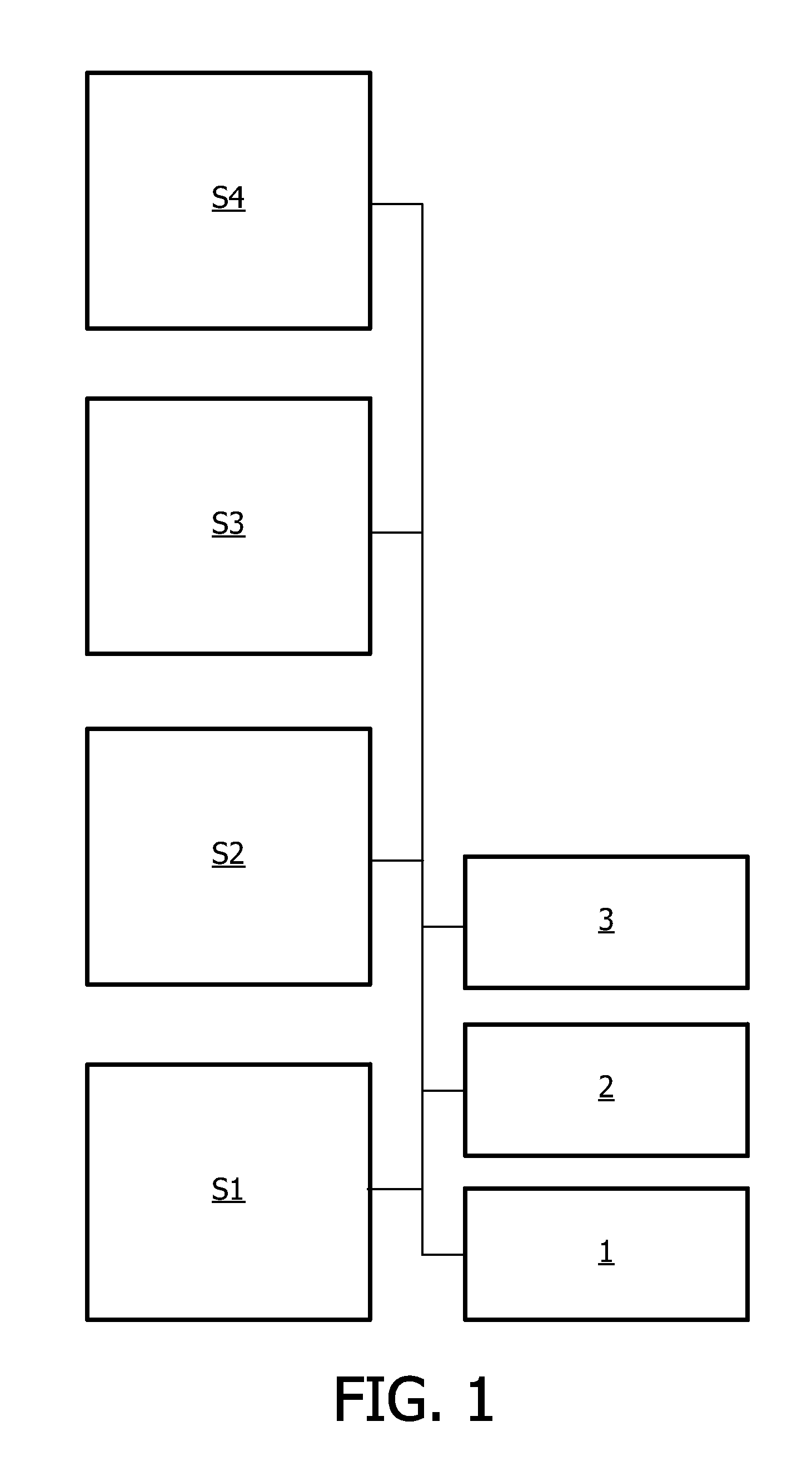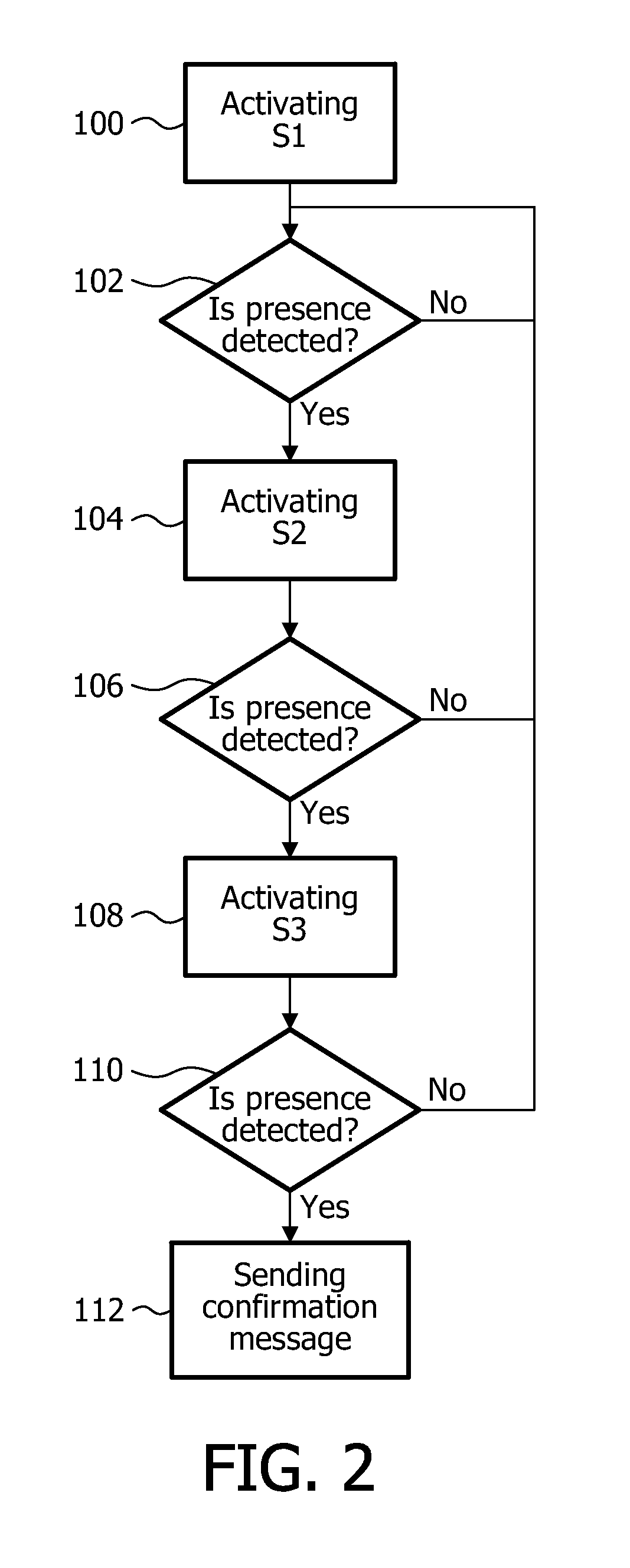Energy efficient cascade of sensors for automatic presence detection
a cascade of sensors and automatic detection technology, applied in the field of cascade connected sensors, can solve the problems of people being terrified, future true readings being ignored, damage to your car, etc., and achieve the effect of low overall power consumption, accurate and more power consumption, and high accuracy
- Summary
- Abstract
- Description
- Claims
- Application Information
AI Technical Summary
Benefits of technology
Problems solved by technology
Method used
Image
Examples
first embodiment
[0039]FIG. 2 is a flow chart illustrating the method according to the present invention. In a first step 100 the control unit 2 depicted in FIG. 1 activates the first sensor s1. Thereafter, the control unit 2, in step 102, waits for the first sensor s1 to detect presence. If presence is detected, the control unit 2 activates the second sensor s2 in step 104. If the first sensor s1 does not detect presence it will keep waiting until it does. Thereafter, in step 106, the control unit 2 waits a predetermined time for the second sensor s2 to detect presence. The predetermined time is set such that it is sufficiently long for the second sensor s2 to make a proper scanning. If no detection is made by the second sensor s2 within that predetermined time, the control unit 2 returns to step 102.
[0040]However, if the second sensor s2 confirms the first sensor's s1 detection, the control unit 2 will activate the third sensor s3 in step 108. In step 110, the control unit 2 waits a predetermined ...
second embodiment
[0041]FIG. 3 is a flow chart illustrating the method according to the present invention. The second embodiment corresponds substantially to the one described in conjunction with FIG. 2. Thus, steps 120-132 are identical with steps 100-112 in FIG. 2 and are therefore not described again. However, the second embodiment also includes a step 134, which runs in parallel with the method depicted in FIG. 2. In the first embodiment a subsequent sensor is only activated if a previous sensor has detected presence. As an alternative, a sensor may also be intermittently or randomly activated in step 134. This will be beneficial if the first or second sensor is malfunctioning, giving a false reading or is being tampered with, since the third sensor s3 will be activated with some predetermined frequency, or randomly, even if the previous sensors have not detected presence.
[0042]Also FIG. 4 shows an embodiment of the method that substantially corresponds to the embodiment shown in FIG. 2 together ...
PUM
 Login to View More
Login to View More Abstract
Description
Claims
Application Information
 Login to View More
Login to View More - R&D
- Intellectual Property
- Life Sciences
- Materials
- Tech Scout
- Unparalleled Data Quality
- Higher Quality Content
- 60% Fewer Hallucinations
Browse by: Latest US Patents, China's latest patents, Technical Efficacy Thesaurus, Application Domain, Technology Topic, Popular Technical Reports.
© 2025 PatSnap. All rights reserved.Legal|Privacy policy|Modern Slavery Act Transparency Statement|Sitemap|About US| Contact US: help@patsnap.com



